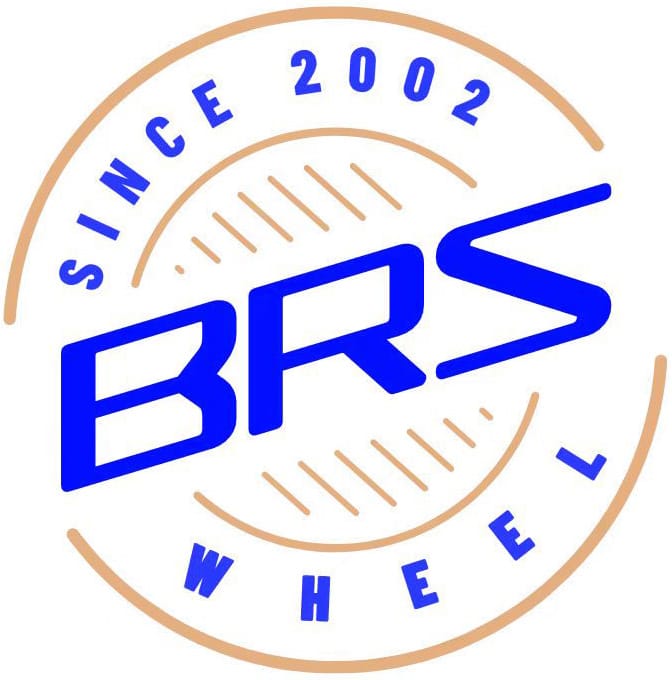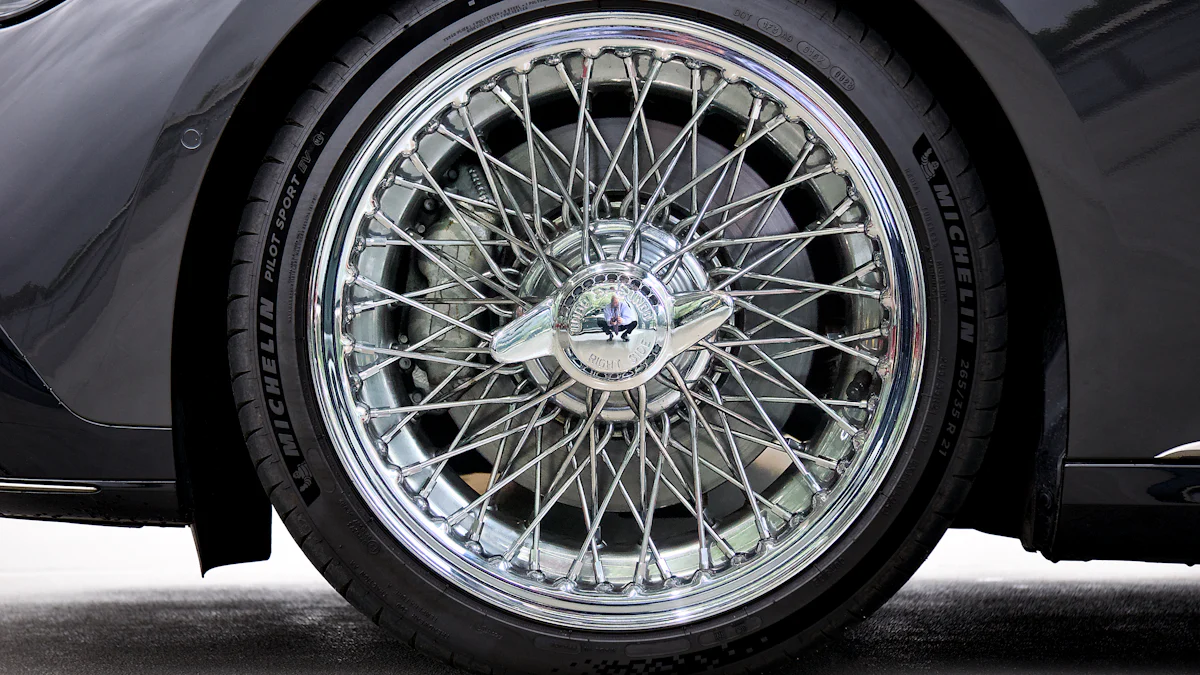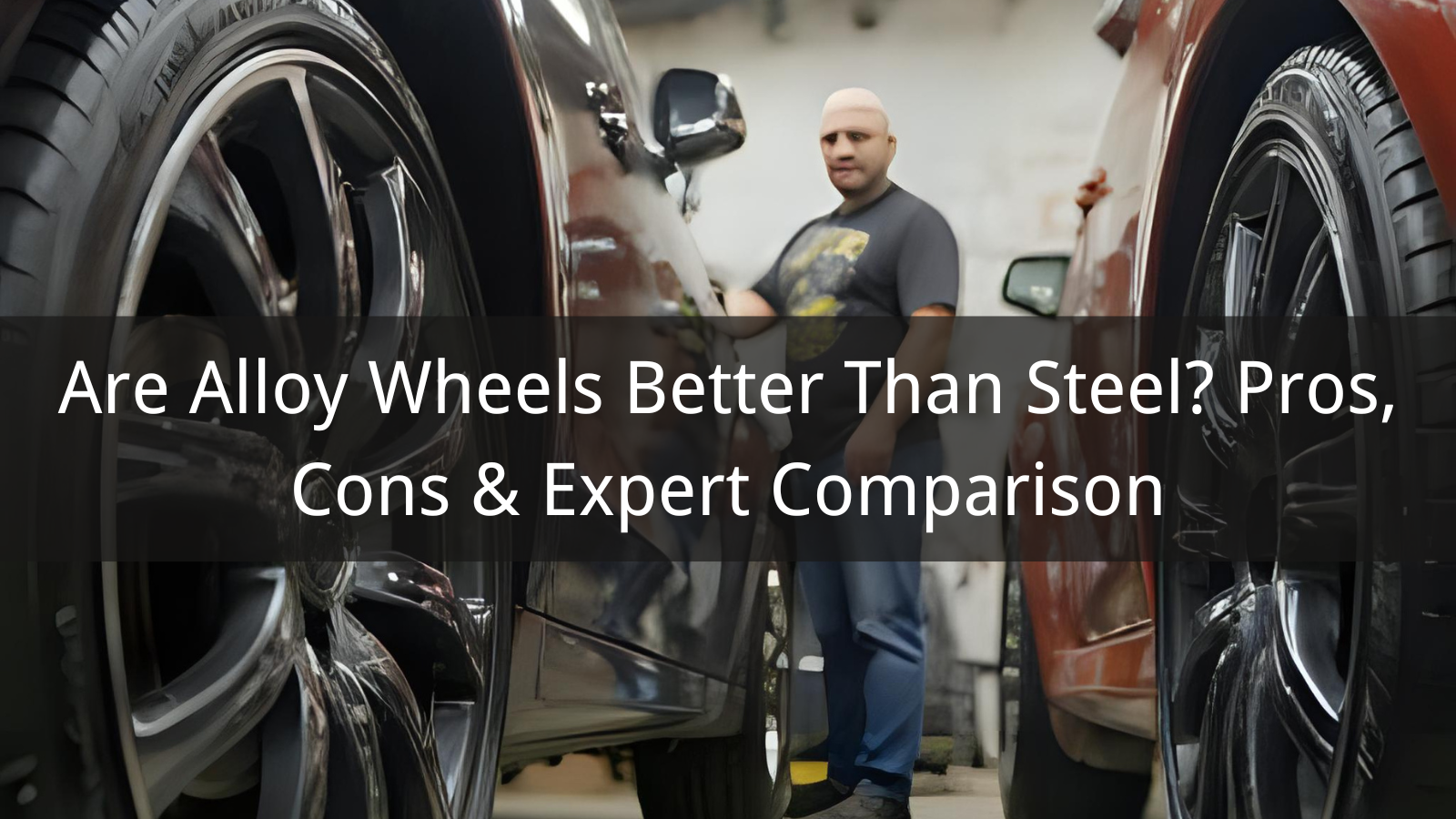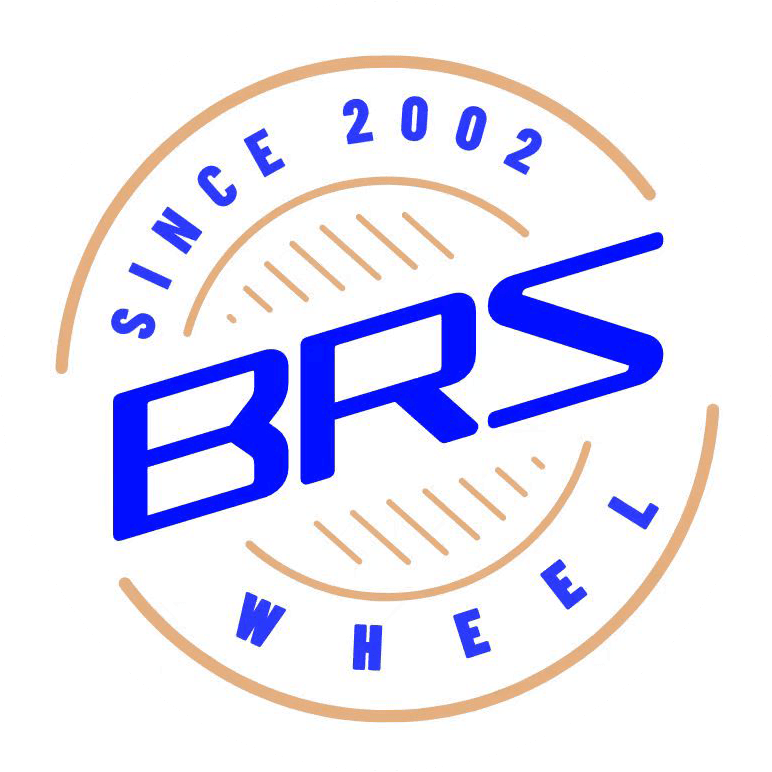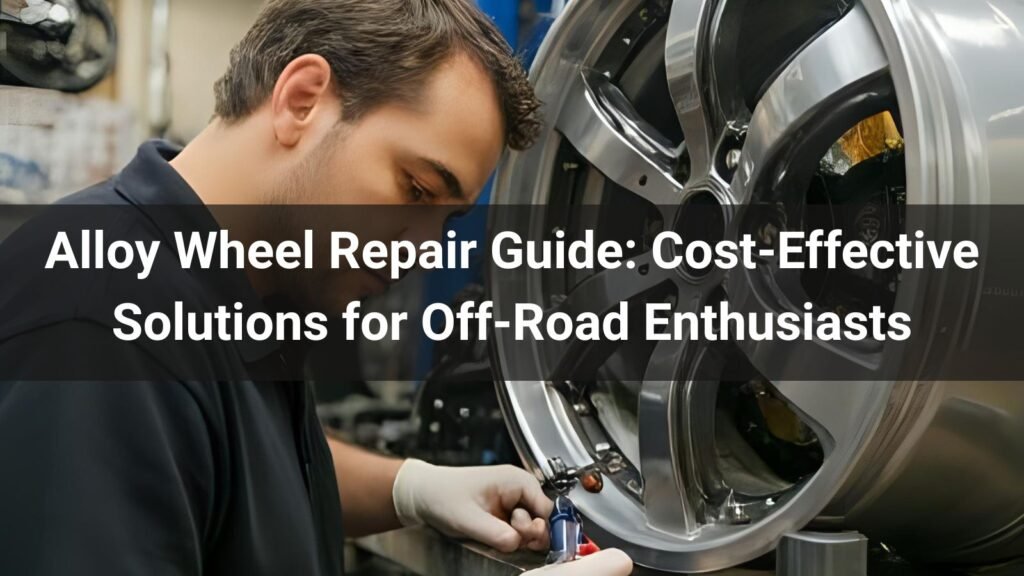
Alloy wheels face numerous challenges from daily driving and off-road adventures, including rust, road rash, and general wear. Understanding when repairs are worthwhile and how to properly maintain your wheels can save significant costs while ensuring optimal performance. This comprehensive guide addresses common wheel repair scenarios, maintenance best practices, and specialized considerations for lifted trucks and off-road vehicles.
Table of Contents
- Repairing Rusted Alloy Wheels: Methods and Feasibility
- Road Rash Repair: Techniques and Cost Analysis
- When Alloy Wheel Repairs Are Cost-Effective
- Rim Repair vs Replacement: Making the Right Choice
- Essential Wheel Maintenance Practices
- Special Maintenance Requirements for Lifted Trucks
- Off-Road Suspension Maintenance Guidelines
- Lift Kit Performance in Off-Road Applications
Repairing Rusted Alloy Wheels: Methods and Feasibility
Rust on alloy wheels presents both aesthetic and structural concerns that require careful evaluation. While true aluminum alloy wheels don’t rust in the traditional sense, they can suffer from corrosion, oxidation, and galvanic corrosion where they contact steel components.
The repairability of rusted or corroded alloy wheels depends on several factors:
Types of Corrosion on Alloy Wheels
- Surface oxidation: White, chalky appearance that affects only the surface finish
- Galvanic corrosion: Occurs where aluminum contacts dissimilar metals
- Pitting corrosion: Deep, localized corrosion that creates small holes
- Crevice corrosion: Develops in tight spaces where moisture accumulates
Repair Methods for Different Corrosion Types
| Corrosion Type | Repair Method | Success Rate | Cost Range |
|---|---|---|---|
| Surface Oxidation | Chemical cleaning, polishing, refinishing | 95% | $50-$150 per wheel |
| Light Pitting | Sanding, filling, refinishing | 80% | $100-$250 per wheel |
| Deep Pitting | Welding, reshaping, refinishing | 60% | $200-$400 per wheel |
| Structural Damage | Not recommended | N/A | Replacement advised |
The repair process typically involves several steps: assessment of damage extent, chemical or mechanical cleaning, surface preparation, structural repairs if needed, primer application, refinishing, and protective coating application.
For off-road enthusiasts who frequently encounter harsh conditions, prevention is often more cost-effective than repair. At Ningbo BRS Auto Parts Co., Ltd, we manufacture steel wheels specifically designed for off-road applications that offer superior corrosion resistance compared to alloy wheels. Our 4×4 off-road wheels use high-grade N330 steel for rims and N400 steel for discs, ensuring exceptional durability in challenging environments.
For technical consultation on wheel selection and maintenance, contact us at Phone: 0086 19810666863, Email: carrie@brsautoparts.com, or WhatsApp: 0086 19810666863. Our technical team is available 8:00 – 21:00 from Monday to Friday, with responses provided within 24 hours on holidays. Visit our website at https://brsrim.com/ for more information.
Road Rash Repair: Techniques and Cost Analysis
Road rash, or curb damage, is one of the most common types of wheel damage, typically occurring when wheels contact curbs, road debris, or obstacles during parking or driving. The good news is that most road rash can be successfully repaired with proper techniques.
Assessing Road Rash Damage
Before attempting repairs, thoroughly assess the damage:
- Surface scratches: Affect only the clear coat or paint layer
- Deep gouges: Penetrate into the metal substrate
- Structural damage: Affect the wheel’s structural integrity
- Bent rim edges: May affect tire sealing and safety
DIY Road Rash Repair Methods
For minor surface damage, DIY repairs are often feasible:
Materials Needed:
- Sandpaper (various grits from 220 to 2000)
- Automotive primer suitable for aluminum
- Matching paint or wheel refinishing kit
- Clear coat protectant
- Polishing compound
- Masking tape and protective covers
Step-by-Step Process:
- Clean the affected area thoroughly
- Sand the damaged area progressively from coarse to fine grit
- Apply primer in thin, even coats
- Sand primer smooth with fine grit sandpaper
- Apply base coat in multiple thin layers
- Apply clear coat for protection and gloss
- Polish to match surrounding finish
Professional Road Rash Repair
Professional repairs offer several advantages over DIY methods:
- Color matching: Professional paint matching ensures seamless repairs
- Equipment access: Specialized tools for welding and reshaping
- Quality finish: Professional-grade materials and techniques
- Warranty protection: Most professional repairs include warranties
| Damage Severity | DIY Cost | Professional Cost | Time Required | Success Rate |
|---|---|---|---|---|
| Minor scratches | $20-$50 | $75-$150 | 2-4 hours | 90% DIY / 95% Professional |
| Deep gouges | $50-$100 | $150-$300 | 4-8 hours | 70% DIY / 90% Professional |
| Multiple areas | $100-$200 | $250-$500 | 8-12 hours | 60% DIY / 85% Professional |
For vehicles frequently used in demanding conditions, consider upgrading to more durable wheel options. Our American off-road wheels are engineered to withstand harsh conditions with minimal cosmetic damage, reducing the need for frequent repairs.
When Alloy Wheel Repairs Are Cost-Effective
Determining whether alloy wheel repair is worthwhile requires careful consideration of multiple factors including damage extent, wheel value, safety implications, and long-term costs.
Financial Considerations
The economic viability of wheel repair depends on:
Wheel Value vs Repair Cost
- High-end wheels ($500+ each): Repairs up to $400 often worthwhile
- Mid-range wheels ($200-$500 each): Repairs under $200 typically cost-effective
- Budget wheels (Under $200 each): Repairs over $100 may not be economical
Age and Condition Factors
Consider the overall wheel condition:
- Wheels under 3 years old with isolated damage are good repair candidates
- Older wheels with multiple issues may be better replaced
- Matching availability for individual wheel replacement affects decisions
- Overall tire condition influences repair vs replacement timing
Safety Considerations
Safety must always be the primary concern when evaluating repairs:
Structural Integrity Issues
- Cracks: Never attempt to repair cracked wheels
- Bent rims: Professional assessment required for safety
- Corrosion depth: Deep corrosion may compromise strength
- Weld quality: Only certified professionals should perform structural welds
Performance Impact
Consider how repairs might affect wheel performance:
- Balance and runout specifications after repair
- Long-term durability of repaired areas
- Impact on tire wear patterns
- Effect on vehicle handling characteristics
Alternative Solutions
Sometimes, upgrading to different wheel types offers better long-term value. For demanding applications, steel wheels often provide superior durability and repairability. At Ningbo BRS Auto Parts Co., Ltd, we’ve been manufacturing high-quality 4×4 off-road wheels for over 20 years, ensuring robotic run-out control within 1.0mm for optimal performance. Our wheels serve customers globally across South America, India, Australia, and other regions with a typical delivery time of two months.
Contact our technical team at Phone: 0086 19810666863 or Email: carrie@brsautoparts.com to discuss cost-effective wheel solutions for your specific application. You can also reach us via WhatsApp: 0086 19810666863. Our team is available 8:00 – 21:00 from Monday to Friday, with responses within 24 hours on holidays.
Rim Repair vs Replacement: Making the Right Choice
The decision between rim repair and replacement involves evaluating damage severity, cost implications, safety considerations, and long-term performance expectations. Making the right choice requires understanding both the technical and economic aspects of each option.
Damage Assessment Criteria
Repairable Damage Types
- Cosmetic scratches and scuffs: Surface-level damage affecting appearance only
- Minor bends: Small deviations that don’t affect structural integrity
- Corrosion spots: Localized corrosion that hasn’t penetrated deeply
- Paint damage: Clear coat or paint layer issues without metal damage
Non-Repairable Damage
- Cracks of any size: Structural failure risk too high
- Severe bends: May not return to original specifications
- Deep corrosion: Compromises structural integrity
- Weld failures: Previous repair failures indicate replacement necessity
Cost-Benefit Analysis Framework
| Factor | Repair Advantages | Replacement Advantages |
|---|---|---|
| Initial Cost | Lower upfront expense | Known total cost |
| Longevity | Variable depending on damage | Full expected service life |
| Performance | May not restore original specs | Guaranteed original performance |
| Warranty | Limited repair warranty | Full manufacturer warranty |
| Matching | Maintains original set | May require complete set replacement |
Professional Assessment Importance
Professional evaluation is crucial for making informed decisions. Qualified technicians can:
- Detect hidden structural damage not visible to untrained eyes
- Assess whether repairs will meet safety standards
- Provide accurate cost estimates for quality repairs
- Advise on long-term performance expectations
- Recommend appropriate repair techniques for specific damage types
Upgrade Opportunities
Rim replacement decisions present opportunities to upgrade to more suitable wheels for your application. Consider factors such as:
- Driving conditions: Off-road use may benefit from different wheel materials
- Load requirements: Heavy-duty applications need appropriate ratings
- Maintenance preferences: Some materials require less upkeep
- Performance goals: Weight and strength considerations for specific uses
Essential Wheel Maintenance Practices
Proper wheel maintenance extends service life, maintains safety standards, and preserves appearance while reducing the need for costly repairs. Implementing a systematic maintenance routine pays dividends in longevity and performance.
Regular Cleaning and Inspection
Weekly Maintenance Tasks
- Visual inspection: Check for new damage, cracks, or unusual wear
- Pressure checks: Maintain proper tire inflation
- Basic cleaning: Remove brake dust and road debris
- Lug nut inspection: Verify tightness and condition
Monthly Detailed Maintenance
- Thorough cleaning: Deep clean with appropriate products
- Torque verification: Check lug nut torque specifications
- Balance assessment: Note any vibration or unusual wear patterns
- Valve stem inspection: Check for leaks or damage
Cleaning Techniques and Products
Appropriate Cleaning Products
| Wheel Type | Recommended Cleaners | Avoid | Special Considerations |
|---|---|---|---|
| Painted Alloy | pH-neutral wheel cleaners | Acidic or alkaline cleaners | Use soft brushes only |
| Polished Alloy | Metal polishes, mild soaps | Abrasive compounds | Immediate drying essential |
| Chrome | Chrome-specific cleaners | Steel wool, harsh abrasives | Regular polishing maintains finish |
| Steel | General-purpose cleaners | Prolonged moisture exposure | Monitor for rust development |
Proper Cleaning Technique
- Start with cool wheels to prevent product staining
- Rinse thoroughly to remove loose debris
- Apply cleaner according to manufacturer instructions
- Use appropriate brushes for wheel design and finish
- Rinse completely, ensuring no cleaner residue remains
- Dry immediately with clean, soft towels
- Apply protective coating if recommended
Protective Measures
Prevention is more cost-effective than repair:
- Protective coatings: Apply appropriate sealers or waxes
- Careful driving: Avoid curbs and road debris when possible
- Regular rotation: Ensure even wear patterns
- Proper storage: Protect wheels during off-season storage
For comprehensive wheel maintenance guidance, refer to our detailed 7 expert tips for professional wheel cleaning. These proven techniques help maintain wheel appearance and performance while preventing premature deterioration.
Special Maintenance Requirements for Lifted Trucks
Lifted trucks present unique maintenance challenges due to altered geometry, increased stress on components, and modified operating conditions. Understanding these requirements is essential for maintaining safety, performance, and component longevity.
Increased Maintenance Frequency
Lifted trucks typically require more frequent maintenance intervals due to:
- Higher stress levels: Components work harder due to geometry changes
- Exposure factors: Increased clearance exposes components to more debris
- Operating conditions: Often used in more demanding environments
- Component accessibility: Some areas become harder to inspect regularly
Critical Maintenance Areas
Driveline Components
- CV joints: Increased angles cause accelerated wear
- Driveshaft balancing: Length changes may affect balance
- Transfer case: Different operating angles increase stress
- Differential maintenance: Higher loads require more frequent service
Steering and Suspension
- Alignment frequency: Lifted trucks need more frequent alignments
- Ball joint inspection: Increased angles accelerate wear
- Steering stabilizer: May require upgrading or more frequent replacement
- Shock absorber service: Extended shocks work harder and wear faster
Wheel and Tire Considerations
Lifted trucks often use larger, heavier wheel and tire combinations that require special attention:
| Component | Standard Truck Interval | Lifted Truck Interval | Reason for Change |
|---|---|---|---|
| Wheel Alignment | 12-15k miles | 8-10k miles | Altered suspension geometry |
| Tire Rotation | 5-8k miles | 3-5k miles | Uneven wear patterns |
| Brake Inspection | 12k miles | 8k miles | Larger wheels/tires increase brake stress |
| Bearing Service | 60k miles | 40k miles | Increased unsprung weight |
Specific Wheel Maintenance for Lifted Trucks
- Increased inspection frequency: Check for stress cracks more often
- Proper torque specifications: Larger wheels may require different torque values
- Balance verification: Heavier combinations are more sensitive to imbalance
- Load rating verification: Ensure wheels can handle increased vehicle weight
For lifted truck applications requiring maximum durability, consider our specialized wheels built to withstand the toughest conditions. These wheels are engineered to handle the increased stresses associated with lifted vehicle applications.
Off-Road Suspension Maintenance Guidelines

Off-road suspension systems endure extreme conditions that accelerate wear and require specialized maintenance approaches. Proper care ensures optimal performance, safety, and component longevity in demanding environments.
Understanding Off-Road Suspension Stresses
Off-road conditions create unique challenges:
- Impact loading: Sudden shocks from rocks, holes, and jumps
- Contamination exposure: Mud, sand, and debris infiltration
- Temperature extremes: Heat buildup and cold weather effects
- Corrosion factors: Salt water, chemicals, and moisture exposure
- Extended travel: Increased suspension movement ranges
Component-Specific Maintenance
Shock Absorbers and Struts
- Visual inspection: Check for leaks, damage, and mounting wear
- Performance testing: Verify proper damping characteristics
- Seal maintenance: Keep seals clean and properly lubricated
- Mounting hardware: Check bushings and mounting points regularly
Springs and Coilovers
- Coil springs: Inspect for cracks, fatigue, and proper seating
- Leaf springs: Check for broken leaves and proper lubrication
- Coilover units: Maintain proper preload and adjust for conditions
- Air springs: Verify pressure and check for leaks regularly
Control Arms and Links
- Bushing inspection: Look for cracking, separation, and excessive play
- Ball joint service: Grease regularly and check for wear
- Weld inspection: Check fabricated components for stress cracks
- Hardware torque: Verify proper bolt torques after off-road use
Maintenance Schedule for Off-Road Use
| Component | Inspection Interval | Service Interval | Critical Signs |
|---|---|---|---|
| Shocks/Struts | After each outing | 20-30k miles | Leaking fluid, excessive bounce |
| Ball Joints | Monthly | Grease every 5k miles | Play in joint, damaged boots |
| Bushings | Every 5k miles | Replace as needed | Cracking, separation, hardening |
| Springs | Every 10k miles | Service as needed | Sagging, cracking, noise |
Post-Adventure Maintenance Protocol
Implement a systematic post-trip maintenance routine:
- Immediate cleaning: Remove mud, sand, and debris
- Visual inspection: Look for obvious damage or loose components
- Lubrication service: Grease fittings and moving parts
- Torque verification: Check critical fasteners
- Fluid checks: Verify differential and transfer case levels
- Documentation: Record any issues for future reference
Lift Kit Performance in Off-Road Applications
Lift kits can significantly enhance off-road performance when properly selected, installed, and maintained. Understanding the benefits and considerations helps determine if a lift kit is appropriate for your specific off-road needs.
Off-Road Advantages of Lift Kits
Ground Clearance Benefits
- Obstacle clearance: Navigate rocks, logs, and terrain features
- Underbody protection: Reduce risk of damage to vital components
- Approach angles: Improve ability to climb steep inclines
- Departure angles: Reduce risk of getting hung up when descending
Tire Accommodation
- Larger tire fitment: Allow installation of more aggressive tread patterns
- Improved traction: Larger contact patches in sand and mud
- Lower air pressure capability: Enhanced flotation and traction
- Sidewall protection: Taller sidewalls resist punctures
Types of Lift Kits and Applications
| Lift Type | Height Range | Best Applications | Complexity | Cost Range |
|---|---|---|---|---|
| Leveling Kit | 1-3 inches | Mild off-roading, aesthetics | Low | $200-$800 |
| Suspension Lift | 2-6 inches | Serious off-roading | Medium | $1,000-$5,000 |
| Body Lift | 1-3 inches | Tire clearance only | Low | $300-$1,500 |
| Combination | 4-8+ inches | Extreme off-roading | High | $2,000-$10,000+ Information Contact Info.
No. 1 Headquarters, Rili Middle Road, Yinzhou District, Ningbo, China
0086 19810666863
0086 19810666863
8:00 – 21:00 from Monday to Friday Copyright © 2024 Ningbo BRS Auto Parts Co.,Ltd. Created by Ningbo BRS Auto Parts Co.,Ltd – Manufacturer of High – Quality Auto Wheels. |
